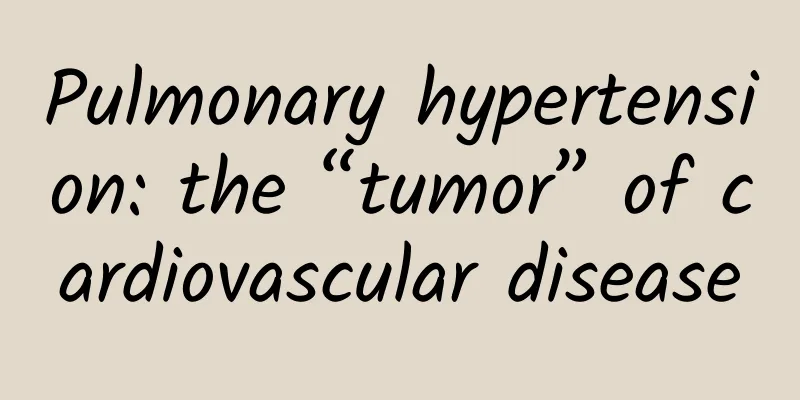Pulmonary hypertension: the “tumor” of cardiovascular disease

|
Sources of pulmonary hypertension In 1981, an incident in Spain caused by toxic rapeseed oil-induced pulmonary hypertension resulted in 20,000 victims. In May of that year, an 8-year-old boy became the first death in the incident. For this reason, the Spanish Society of Pulmonary Hypertension recommended in 2012 that May 5 of each year be designated as "World Pulmonary Hypertension Day" to raise awareness of pulmonary hypertension and promote the improvement of prevention and treatment. The establishment of "World Pulmonary Hypertension Day" aims to improve the quality of life of 25 million patients with pulmonary hypertension worldwide and prolong their life expectancy. In the past, pulmonary hypertension was considered a rare disease, or even a rare disease. In recent years, with the improvement of diagnostic technology, scholars have found that pulmonary hypertension is not uncommon. It is currently considered the third most common cardiovascular disease after coronary heart disease and hypertension. In addition, pulmonary hypertension is an extremely malignant disease. The median survival time of untreated patients is only 2.8 years, and 75% of patients die within 5 years of diagnosis. The average survival time after the onset of symptoms is 1.9 years, and the average survival time after the onset of right heart failure is less than 1 year. Therefore, it is clinically called a "disease more malignant than many malignant tumors." Definition of pulmonary hypertension Pulmonary hypertension (PH) refers to a clinical and pathophysiological syndrome caused by changes in pulmonary vascular structure or function due to a variety of heterogeneous diseases (etiologies) and different pathogenesis, resulting in increased pulmonary vascular resistance and pulmonary artery pressure, which can then develop into right heart failure or even death. Its specific hemodynamic definition refers to the mean pulmonary artery pressure (mPAP) ≥ 25 mmHg measured by right heart catheterization (RHC) at sea level, while the mPAP of a normal adult at rest is about 14 mmHg, and its upper limit does not exceed 20 mmHg. Simply put, pulmonary hypertension is high blood pressure that occurs in the pulmonary arteries. When the pulmonary artery pressure is too high, the heart must work harder to pump blood. As the pulmonary artery pressure increases, the patient's heart burden increases, eventually leading to right heart failure and even death. Clinically, PH is divided into 5 categories: (1) Pulmonary arterial hypertension (PAH); (2) PH caused by left heart disease; (3) PH caused by lung disease and/or hypoxia; (4) PH caused by chronic thromboembolic pulmonary hypertension (CTEPH) and/or other pulmonary artery obstructive lesions; (5) PH caused by unknown and/or multiple factors. symptom Common daily manifestations of PAH patients include: shortness of breath after exercise, palpitations, syncope on exertion, Raynaud's phenomenon, arthritis or joint pain, rash, hepatitis, loud snoring, daytime sleepiness, morning headache, dry cough or coughing up blood, chest pain, anorexia, swelling of arms or legs, lips or fingers turning purple or blue (clubbing), etc. Patients with pulmonary hypertension have blue or purple lips due to lack of oxygen, so they are also called "blue lips". Blue lips are also an internationally recognized publicity symbol for pulmonary hypertension. diagnosis Pulmonary hypertension is often misdiagnosed, sometimes for years, and the condition is already severe when it is diagnosed. The key to treating pulmonary hypertension is early diagnosis and early treatment. To diagnose whether it is pulmonary hypertension, the hospital generally needs to do the following tests: chest X-ray, electrocardiogram, lung function test, blood test and immunology test, echocardiogram, high-resolution CT scan. Pulmonary hypertension has a wide range of causes and lacks specific clinical symptoms. It is generally difficult to diagnose based on symptoms and signs alone. Cardiac ultrasound is one of the important examination methods for screening PH. It is simple, easy, cheap, and non-invasive. Therefore, American experts have recommended Doppler echocardiography as the most appropriate initial examination method for patients with pulmonary hypertension. However, right cardiac catheterization is the standard method for diagnosing pulmonary hypertension, assessing the severity of hemodynamic damage, and testing vascular reactivity. It is also the only examination method for diagnosing pulmonary hypertension, especially for patients with obvious symptoms who may need pulmonary hypertension-specific treatment (also known as targeted therapy). treat At present, targeted drugs are the first choice for treating pulmonary hypertension, and the common treatment method is the combination of 2-3 pathways. In the past decade, with the progress of targeted drugs, the survival rate and quality of life of patients with pulmonary hypertension have been significantly improved. Early and timely diagnosis and treatment can stabilize the condition of 20% of patients or even cure them. Therefore, given the poor treatment effect of late-stage pulmonary hypertension, its early identification and treatment are crucial. There are generally no obvious symptoms in the early stages of pulmonary hypertension. As the disease worsens, the symptoms will become more and more obvious. If dyspnea and decreased exercise tolerance occur, timely intervention treatment is required. The earlier pulmonary hypertension is treated, the greater the benefit. If no intervention is performed in the early stages, functional damage is likely to occur over time, such as ventricular remodeling and right heart failure. Therefore, it is recommended that everyone actively conduct early intervention treatment. To learn more about cardiovascular health, please follow Dr. Ma’s Heart Lectures Original article, no reproduction without authorization |
<<: Regarding XBB, beware of these 6 cognitive misunderstandings!
>>: Fragment warning! Orthokeratology contact lenses are also afraid of "cold"
Recommend
How long should you rest after an artificial abortion and what should you pay attention to?
We all know that many female friends choose to ha...
What to do if you have too much milk
Sufficient breast milk can ensure the healthy gro...
What does it mean when a woman dreams of red cloth?
In this year, our relatives always ask us to wear...
What are the symptoms of pelvic effusion?
Pelvic effusion is a gynecological disease. Somet...
Bitter taste in mouth during early pregnancy
In the early stages of pregnancy, female friends ...
Can female urethritis heal itself?
Urethritis is a disease caused by inflammation of...
How long after cervical erosion surgery should I go for a follow-up examination?
What should I pay attention to during the follow-...
What causes vaginal bleeding after pregnancy?
Vaginal bleeding after pregnancy! Many pregnant w...
“Health from Food” Series | Dyslipidemia: Are You Eating Right?
With the change of modern lifestyle, dyslipidemia...
What is the cause of brown discharge during pregnancy?
When a woman is in the second trimester of pregna...
Women need special care for 3 parts in winter
With the arrival of winter, girls should start pa...
A thick yellow-green color flows out from below
Adult female friends generally understand the cha...
How should girls reduce their breasts?
Many of my friends are worried about their small ...
What causes cervical ectropion?
Many women have never known about gynecological d...
How to reduce abdominal wall fat in pregnant women
Some expectant mothers will find a very embarrass...









